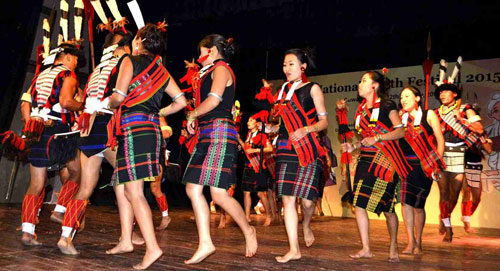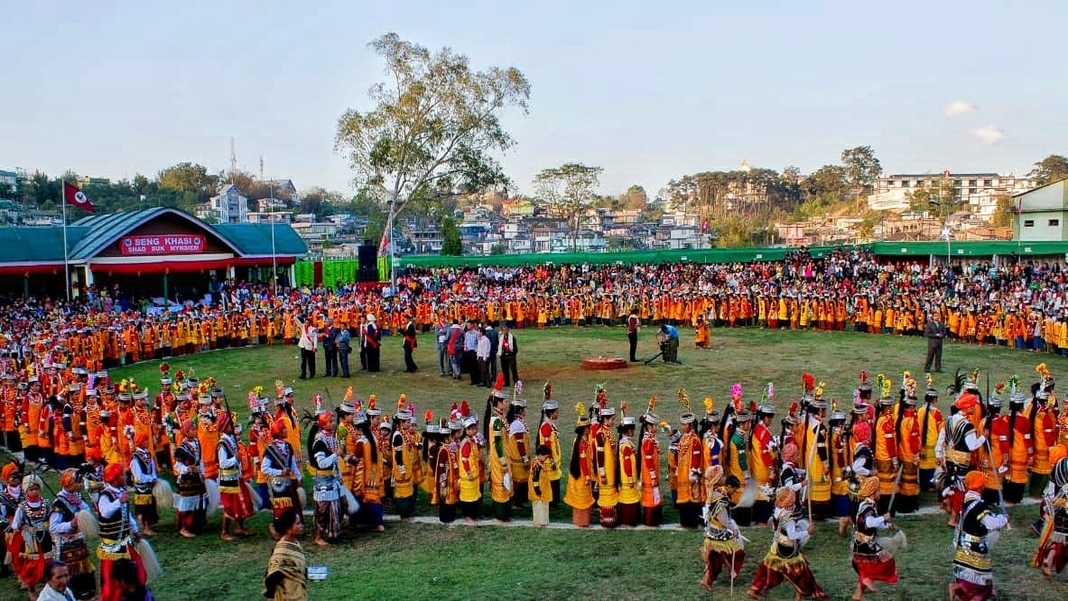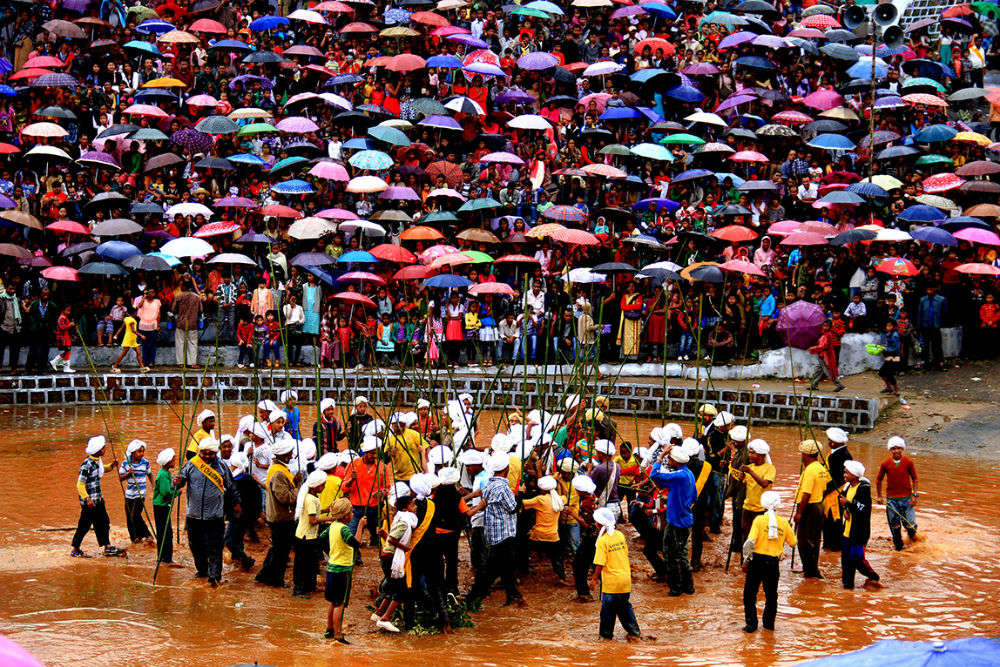When visiting Meghalaya, you will want to take in the local dances, particularly the Laho Dance. There are many other types of Meghalayan dances, including the Dorsegata Dance and wangala. Here’s a look at some of the most popular. Listed below are some of the most popular Dances of Meghalaya. Make sure to watch some of these dances and learn about the history behind them.
1. Dorsegata Dance

The dance forms of Meghalaya are diverse and beautiful, combining religious, agricultural, and recreational elements. Dance performances are usually staged in open spaces. Music performed by traditional instruments accompany the performances. Traditionally, males and women perform the Dorsegata dance. The Dorsegata dance requires the women to knock off the turbans of their male partners. Other dance forms in Meghalaya include the Nongkrem dance and the Shad Sukmynsiem dance.
The Shad Nongkrem festival in Meghalaya is a traditional thanksgiving ceremony to the Almighty Lord. The Shad Nongkrem festival in Meghalaya is held in October and November and echoes the story of Princess Jezebel. The Dorsegata dance is an important part of the Meghalayan culture and a must-see when visiting this state.
Unlike other folk dances, the Dorsegata is performed by the women of Meghalaya. The female dancers link their arms with young men on either side. There is no musical accompaniment during this dance performance, so the ‘cheer leader’ will recite ribald couplets as the dancers perform. The common audience enjoys the performance. The traditional dances of Meghalaya are a great way to celebrate the festivals with the locals.
The Wangala festival is a major Garos festival held in November. The festival includes ceremonies to appease the deity and dancing and merriment. The “Dance of the Hundred Drums” is a powerful ritual that culminates in a warrior’s dance. A woman performing the Dorsegata dance takes her male partner’s turban off, and performs a ceremonial ritual.
2. Wangala Dance

The Wangala dance is one of the most traditional and celebrated dances in Meghalaya. It is a celebration of the Wangala festival, which is held to honour the Sun-god of fertility, Saljong. It marks the end of the harvest season and the beginning of winter, and is performed by villagers dressed in traditional clothing. The dances can be seen at various festivals and events throughout the state, such as Wangala festival and 100 drums festival.
The Wangala festival is celebrated by the Garo tribe every winter. It is a time of thanksgiving to the god Misi Saljong, the Great Giver. The ritual begins with the burning of incense. The dancers then climb oiled poles, perform dances inspired by swaying plants and crabs, and slackline and woven skirts.
Meghalaya is home to a vast range of dances. Traditional Meghalayan dances are intertwined with festivals and are an essential part of Meghalayan celebrations. The tribal dances performed in Meghalaya include derogata, wangala, laho, and do dru sua. Dancing in the Meghalayan culture is an integral part of the Khasi community and is performed on many occasions, such as weddings and funerals.
The Wangala Dance is a ceremonial dance performed by the Garo tribe of Meghalaya. It is characterized by its synchronized steps and lack of musical instruments. It is performed by women and young men on either side of a young man. This dance is often performed during local festivals. Besides, it is also a form of expression of sorrow.
Suggested Tour Packages
- Jaipur Tour
- Taj Mahal Tour
- Delhi Tour Packages
- Rajasthan Tour Packages
- Golden Triangle Tour Packages
- North East Tour Packages
3. Shad Suk Dance

The Shad Suk Mynsiem is an important festival celebrated by the Khasi tribe in Meghalaya. The festival is held in the Khasi Hills, close to Shilong. This festival marks the arrival of spring and also bids adieu to the harvest season. Shad Suk Mynsiem is a three-day festival. The dance is performed by men and women from all walks of life.
The Shad Suk Mynsiem dance is an important part of Meghalaya’s culture and is the pinnacle of Khasi culture. Meghalaya is home to over 1.5 lakh Khasi people. More than half of the state’s population is comprised of the Khasi tribe. Shad Suk Mynsiem is a celebration of a traditional Khasi culture.
The Shad Suk Mynsiem festival is held annually in the Khasi hills and is a vibrant celebration of harvest, planting season, and agricultural cycles. The dancers are decked out in colorful robes and jewelry, and perform with a tangmuri flute in their hands. The festival is complemented by musicians who play flutes, drums, and pipes.
The women in the ka Shad Suk Mynsiem dance keep their eyes low and gradually shift sideways. The men, meanwhile, remain in the outer circle and do their part by fast movements around the women. The men, in the outer circle, play the role of protectors. The dancers are also dressed in turbans, waistcoats, and gold ornaments.
The Shad Suk Mynsiem festival is held every year during the month of April. The festival is held in honor of the Misi-A-Gilpa-Saljong-Galapa and is the largest Garo festival. It is celebrated during the months of September and December. This festival is dedicated to the goddess Misi Saljong and the dancers in the village perform various types of dances.
4. Nongkrem Dance

The Nongkrem dance is a sacred ritual celebrated in Meghalaya. The entire community gathers to pray for a bumper harvest and peace. The dance traces its roots back to ancient times, but still retains its essence. The king of Hima Khyrim performs this traditional dance to bless the land. The ritual is performed in the month of November. The entire village celebrates the festival over five days.
Nongkrem dance in Meghalaya is a religious event dedicated to the gods. The dancers display their masculinity as they swing a sword and adorn themselves with fluffy white hair from a yak. The dancers perform the ritual to the accompaniment of drums, flutes, and pipes. The ritual is not only beautiful, but also rejuvenating. There is no better way to enjoy this traditional Meghalaya dance than to watch it live!
Nongkrem dance is an important ritual in Meghalaya. The festival is celebrated every year in the month of November. The dancers make offerings to the ancestors and ancestress of the ruling clan. The chief of Khyrim, the Syiem of Khyrim, recently met with the high priest of the town to discuss the development of his village.
The Shad Suk Mynsiem festival is another celebration in Meghalaya. It is a celebration that marks the end of harvest season and the onset of the sowing season. This festival takes place in Shillong and is characterized by a local dance of gratitude. There is no other dance as beautiful as this. In addition, the Khasis celebrate Shad Suk Mynsiem.
5. Behdiengkhlam Dance

One of the most popular festivals in Meghalaya is the Behdienkhlam Festival, held every year in July. This festival is a celebration of harvest, a day for warding off evil spirits, and a way to express gratitude to the gods and spirits of the land. The festival is held in the town of Jowai, 60 kilometers from Shillong.
It is believed that the Behdienkhlam festival is rooted in the ancient mythology of the Pnar people. The dance festival was first performed in Jowai, a region that was once inhabited by five deities: four stones and a river nymph. But when the five deities wanted to be human, a tribe of Mongolians settled in the area. The eldest deity, U-Mokhai, initiated a dance that became known as the Behdienkhlam. The dance was first performed in Jowai, and is the basis of the Meghalaya Behdiengkhlam festival. In this festival, a pig is sacrificed to the god Thunder, while priests ring a brass bell to
Another dance in Meghalaya is the Laho dance. Both men and women perform this traditional dance, which is held to thank God and the earth. It was once second to the Republic Day celebrations but now has gained fame among the Pnar tribe. And the festival is not complete without dancing – the Laho Dance is an integral part of this festival. The dance is not only popular with the local population, but also with the visitors of the state.
The Laho dance is another dance that is performed during the Behdiengkhlam festival. Both men and women perform it and dress in colourful clothes. One particular form involves a girl linking arms with two boys on each side, and without the use of any musical instruments, she dances while a man with natural acting skills recites couplets during the performance.

